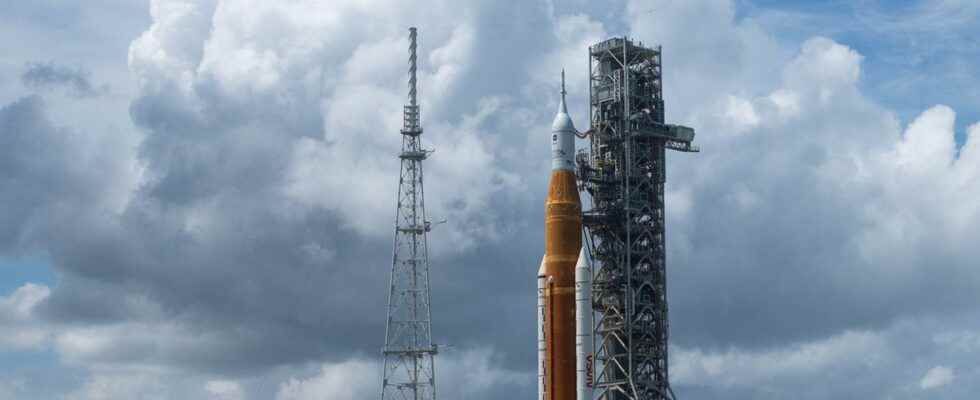Picture: NASA.
The new launch attempt of Artemis I, scheduled for today Tuesday, September 27, has been postponed again. In question, Tropical Storm Ian threatens much of Florida.
Earlier this month, after two failed attempts due to a hydrogen leak and an engine problem, NASA announced that a new launch attempt for the Space Launch System (SLS) and Orion rocket would take place. September 27, with a reserve date of October 2.
But the weather decided otherwise, since Florida should receive the visit of the tropical storm Ian, which could turn into a hurricane when it reaches the west coast of the peninsula. And that arrival could happen today, according to CNN.
Launch suspended
This is why NASA engineers decided last Saturday to suspend the launch attempt scheduled for Tuesday at the Kennedy Space Center, which is located on the east coast of Florida.
NASA said on Sunday it was making final preparations to bring the SLS Artemis I rocket and the Orion spacecraft back to the Vehicle Assembly Building.
NASA’s Rachel Kraft said “officials met Sunday evening to review the latest information on the storm.” Adding that they were meeting “again on Monday to allow additional data to be collected overnight before making a decision”.
Protect personnel and equipment
NASA has studied measures to protect the SLS rocket while giving its employees time to take shelter with their families. Keeping the SLS rocket on the launch pad, despite the risks that this presents, would have made it possible to keep the launch date of October 2.
But Jim Free, NASA’s associate administrator for exploration systems development, finally announced that the rocket was going to be stored in a hangar, and that was the best solution to protect the employees and the rocket itself. -same.
After reviewing the forecast for #ianwe will roll our #Artemis I vehicle back to the Vehicle Assembly Building tonight. It was the right and necessary decision to keep our people and hardware safe: https://t.co/3PM6T0RhF4 pic.twitter.com/YFAONEyihY
—Jim Free (@JimFree) September 26, 2022
The SLS rocket is the most powerful built by NASA to date. Its central stage, manufactured by Boeing, is 212 feet (64.6 meters) high with a diameter of 27.6 feet (8.4 meters).
Objective moon
As a reminder, the Artemis I mission is a demonstration test, with an unmanned flight during which Orion will circle the Moon before returning to Earth. The launch date must take into account that Orion must descend in broad daylight, so that it is easier to recover the ship in the Pacific Ocean. Following this mission, a human expedition should take the direction of the Moon in 2024 or 2025.
Artemis has already cost NASA $40 billion. In total, the project is expected to cost $93 billion through 2025.
Source: ZDNet.com
